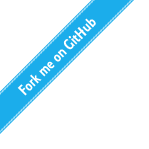Type : Lectures (6h) / Tutorials (8h) / Practical works (14h)
- Design principles
- **Design patterns from the "
- GRASP and SOLID
- Swing

Assistant professor at IUT Robert Schuman.
Type : Lectures (6h) / Practical works (26h)
Type : Lectures (4h) / Practical works (16h)
Type : Lectures (6h) / Tutorials (8h) / Practical works (14h)
Type: Lectures (6h) / Tutorials (8h) / Practical works (26h)
Type: Lectures (4h) / Tutorials (6h) / Practical works (22h)
Teaching assistant at Université de Bordeaux.
Type: Lectures (21h)
Localization: At PUF in Hồ Chí Minh, Vietnam.
Language: English.
The main objective is relative to the description of concepts associated to functions necessary in an operating system: file system organization, scheduling, system calls and interruptions, process creation, inter-process communication. It will also address the use of these functions through the standardized interface of services proposed by the operating system. The student will implement skill on sequential and concurrent programming and inter-process communications. This course will address the notions of process, input/output and communications with an initiation to light processes with OpenMP. It will also introduced the main notions of Unix with the dedicated file systems, the terminal and a script shell language.
Build from courses of Brice Goglin, Paul Krzyzanowski and Pierre-Antoine Champin.
Thanks to Raymond Namyst for his help in ellaborating the course structure.
Type: Tutorials (8h)
The objective is to understand and apply the theoritical tools for digital images and signals by concretely applying the courses concepts. In 8 hours, we will see the question about the motion estimation in videos.
Type: Tutorials (2x11h)
The ojective consists in understanding the basis of image analysis and processing. In particular, we adresse the concepts of resizing, color spaces or morphological operators. The implementaiton part is performed using Java, on the basis of ImageJ](http://rsbweb.nih.gov/ij/) plugins.
Teaching assistant at UFR Mathématiques-Informatique.
Type: Lectures (10h) / Tutorials (10h)
The objective of this module is to introduce to student basic principles governing all existing computer architectures: Von Neumann, layers decomposition from hardware to high-level programing, logic device and assembly language). Due to the limited time related to the number of aspects to study, this courses keeps theoritical (no computer practices).
Based on Carine Pivoteau courses.
Formerly adapted by Marion Guthmuller.
Type: Lectures (20h) / Tutorials (40h)
This objective of this module id to introduce first fundamental notions of an algotithmic approach. It also allows to adress principle to begin with an algorithm to obtain one implementation in a object language.
The work consists in proposing an algorithm set allowing to play to Apagos, strategy game for two players from Francis Pacherie, by basing on:
Type: Lectures (14h) / Tutorials (26h)
This module aims to introduce he Pyhton language in order to apply notions discovered during the 1st semester. It proposes to take ownership of Pyhton syntax before to delving into these notions and introduing news: some data structures, file management or scope of variables.
In progress...
Type: Lectures (15h) / Tutorials (15h)
Type: Lectures/Tutorials/Practical works (20h)
Training in basic tools for better understanding of current digital context:
Teaching assistant at Telecom Nancy (formerly ESIAL).
Type: Lectures-Tutorials (18h) / Practical works (14h) / Projet (30h à 40h)
This module completes algorithmic and data structures formation by three ways:
The objective of OGAZ project is to develop a tool generating a down parser for an LL(1) grammar. Students must use skills obtained in "Discret mathematics", "Object programming and technics" and "Tools for programming" modules. OGAZ is also a first step towards the learning of compiling technics that will be studied in second year, in "Translation" module. We propose to apply the building method of a down parser by automaton: the analyser refers to a transition table of an automaton constructed from a grammar.
The objective of this project is to develop a simplified software of social network management in Java. Especially, the network and database issues are completely overlooked. This project focuses on the use of data structures suitable for notions of friends, invitations or posts. It addresses also to a lesser extent on the good use of genericity. We propose a division into two parts, a first only concerning the design and a second for the Java implementation. This division allows a real consideration of the design part upstream from Java implementation.
The objective of this project is to design, develop and test a job scheduler. In particular, it should allow to use the knowledges acquired in programming modules: inheritance, interfaces, data structures, algorithms, flow management, etc. The tasks to scheduled are specified with a number, a title, an arrival time and possibly a priority. The scheduling must be made according to various conventional policies: FIFO, SJF, RR (q), PR; and two pre-emptive policies: PFIFO and SRT. The scheduling must finally be able to be executed interactively.
Type: Tutorials (4h) / Practical works (10h)
The C language is often presented as a "system programming language", and it is true that most of operating systems ang low-level software are written in C. The UNIX command language, named Shell, and C present many similarities as they were jointly invented. After the first part concerning the C language, this second part aims the learning of command interpreters and Shell concepts.
Type: Lectures (2h) / Project (60h à 80h)
This project allows to develop by practicing, technics and methods obtained in object programming, by designing and developing a JAVA software. With an open topic, students lead the different steps of a computing project by using agile methods.